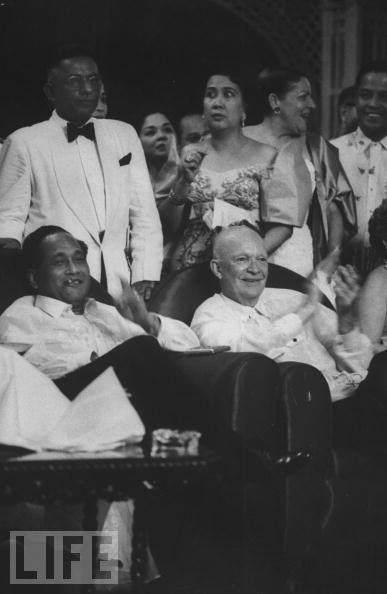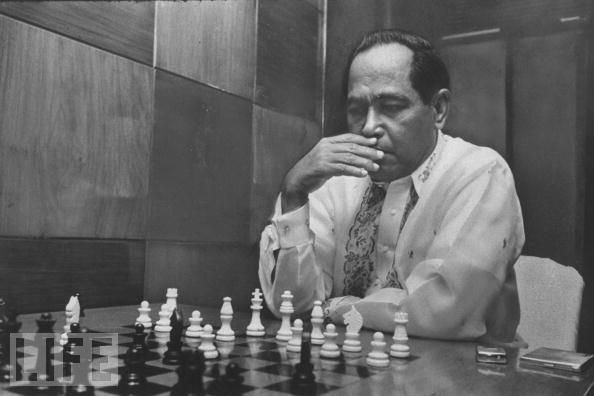<Back to Index>
- Archaeologist Spyridon Nikolaou Marinatos, 1901
- Painter Jan Willem Pieneman, 1779
- 8th President of the Philippines Carlos Polestico García, 1896
PAGE SPONSOR
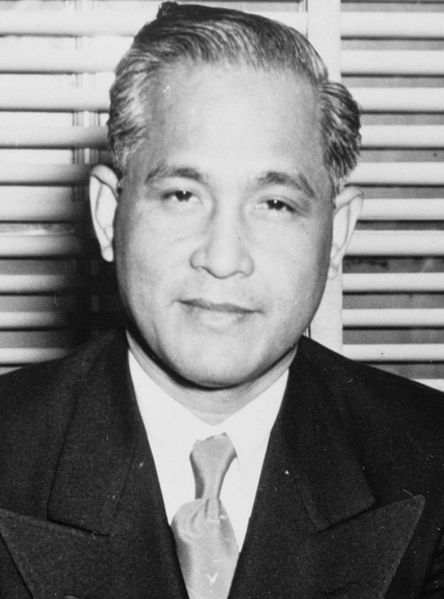
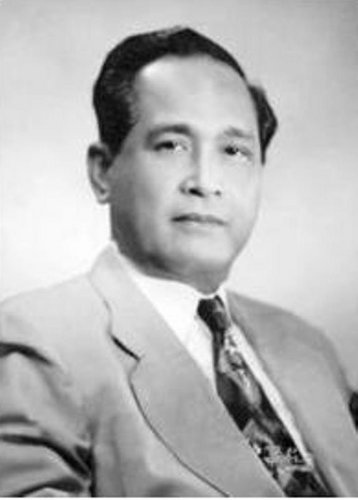
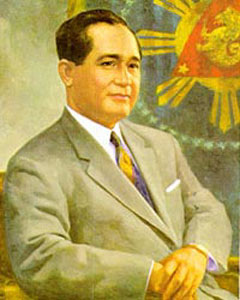
Carlos Polestico García (November 4, 1896 – June 14, 1971) was a Filipino teacher, poet, orator, lawyer, public official, and guerrilla leader. He became the eighth President of the Philippines known for his "Filipino First" policy, which put the interests of the Filipino people above those of foreigners and of the ruling party.
García was born in Talibon, Bohol, to Policronio García and Ambrosia Polestico (who were both natives of Bangued, Abra). García grew up with politics, with his father serving as a municipal mayor for four terms. He acquired his primary education in his native Talibon, then took his secondary education in Cebu Provincial High School. Initially, he pursued his college education at Silliman Universityin Dumaguete City, Negros Oriental, and later studied at the Philippine Law School (now Philippine College of Criminology) where he earned his law degree in 1923. He was among the top ten in the bar examination.
Rather than practice engineering right away, he worked as a teacher for two years at Bohol Provincial High School. He became famous for his poetry in Bohol, where he earned the nickname "Prince of Visayan Poets" and the "Bard from Bohol".
He
started his political career in 1925, scoring an impressive victory
running for congressman representing the third district of Bohol. He
was elected for another term, but served only until 1941 when he
successfully ran for vice - president.
García was the running mate of Ramón Magsaysay in the presidential election of 1953. He was appointed Secretary of Foreign Affairs by President Ramón Magsaysay, for four years concurrently serving as vice-president.
As secretary of foreign affairs, he opened formal reparation negotiations in an effort to end the nine year technical state of war between Japan and the Philippines, leading to an agreement in April 1954. During the Geneva Conference on Korean unification and other Asian problems, García as chairman of the Philippine delegation attacked communist promises in Asia and defended the U.S. policy in the Far East. In a speech on May 7, 1954, the day of the fall of Dien Bien Phu, García repeated the Philippine stand for nationalism and opposition to communism.
García acted as chairman of the eight nation Southeast Asian Security Conference held in Manila in September 1954, which led to the development of the Southeast Asia Treaty Organization, known as SEATO.
At the time of the sudden death of President Ramon Magsaysay, Vice-President and Foreign Affairs Secretary Carlos P. Garcia was heading the Philippine delegation to the SEATO conference then being held at Canberra, Australia. Having been immediately notified of the tragedy, Vice - President Garcia returned back to Manila. Upon his arrival he went directly to Malacañang Palace to assume the duties of President. Chief Justice Ricardo Paras,
of the Supreme Court, was at hand to administer the oath of office.
President Garcia's first actuations dealt with the declaration of a
period of mourning for the whole nation and the burial ceremonies for
the late Chief - Executive Magsaysay.
In the face of the trying conditions of the country, President Garcia initiated what has been called "The Austerity Program". García's administration was characterized by its austerity program and its insistence on a comprehensive nationalist policy. On March 3, 1960, he affirmed the need for complete economic freedom and added that the government no longer would tolerate the dominance of foreign interests (especially American) in the national economy. He promised to shake off "the yoke of alien domination in business, trade, commerce and industry." García was also credited with his role in reviving Filipino cultural arts. The main points of the Austerity Program were:
- The government would tighten up its controls to prevent abuses in the over shipment of exports under license and in under - pricing as well.
- There would be a more rigid enforcement of the existing regulations on barter shipments.
- Government imports themselves were to be restricted to essential items.
- The government also would reduce rice imports to a minimum.
- An overhauling of the local transportation system would be attempted so as to reduce the importation of gasoline and spare parts.
- The tax system would be revised so as to attain more equitable distribution of the payment - burden and achieve more effective collection from those with ability to pay.
- There would be an intensification of food production.
The program was hailed by the people at large and confidence was expressed that the measures proposed would help solve the standing problems of the Republic.
During his administration, he acted on the Bohlen – Serrano Agreement which shortened the lease of the US Bases from 99 years to 25 years and made it renewable after every five years.
At the end of his second term, he ran for reelection in the Presidential elections in November 1961, but was defeated by Diosdado Macapagal, Vice - President
under him, but belonging to the opposing Liberal Party - in the
Philippines the President and the Vice - President are elected separately.
After his failed reelection bid, García retired to Tagbilaran to live as a private citizen. On June 1, 1971, García was elected delegate of the 1971 Constitutional Convention. The convention delegates elected him as the President of the Convention. However, just days after his election, on June 14, 1971, García died from a fatal heart attack. He was succeeded as president of the Convention by his former Vice - President, Diosdado Macapagal.
García is the first president to be buried at the Libingan ng mga Bayani.
